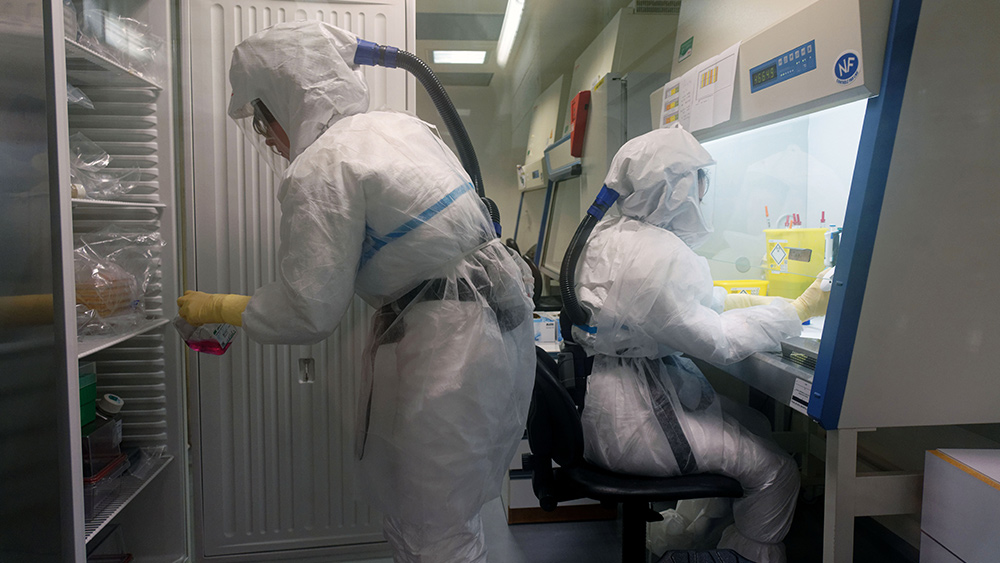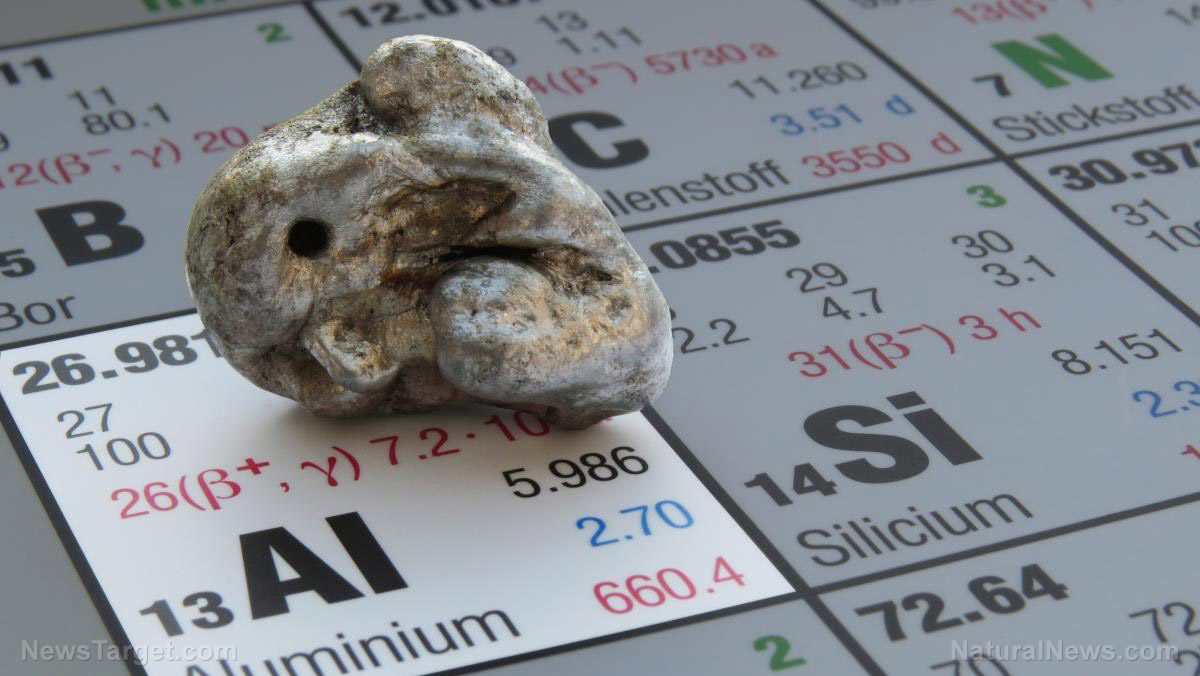 Parler
Parler Gab
Gab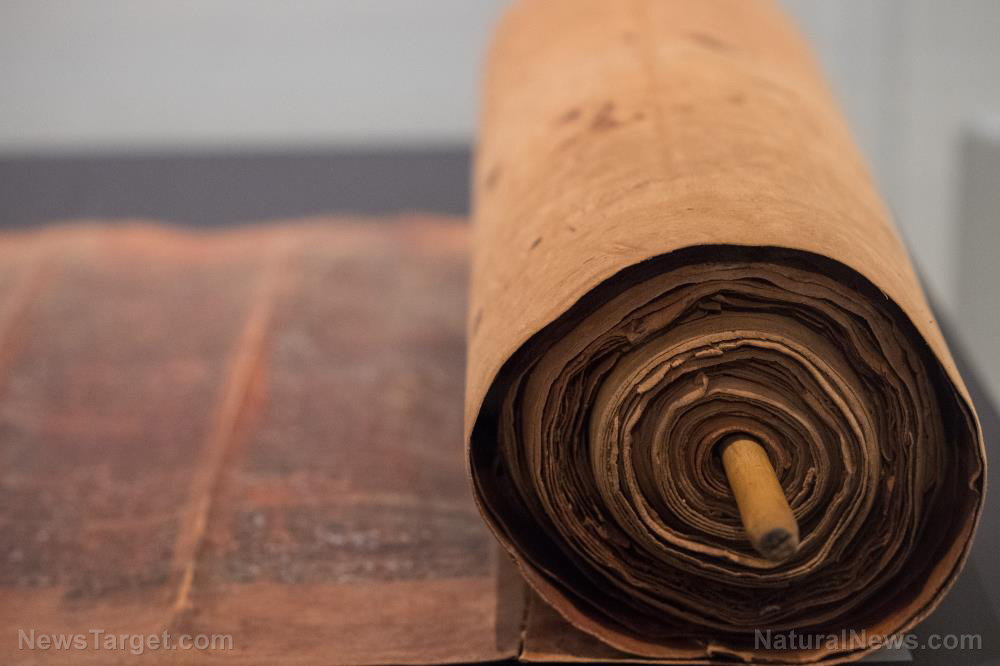
17. 2,000-Year-Old Batteries?
Clay jars with asphalt stoppers and iron rods made some 2,000 years ago have been proven capable of generating more than a volt of electricity. These ancient “batteries” were found by German archaeologist Wilhelm Konig in 1938, just outside of Baghdad, Iraq. [caption id="" align="alignnone" width="592"]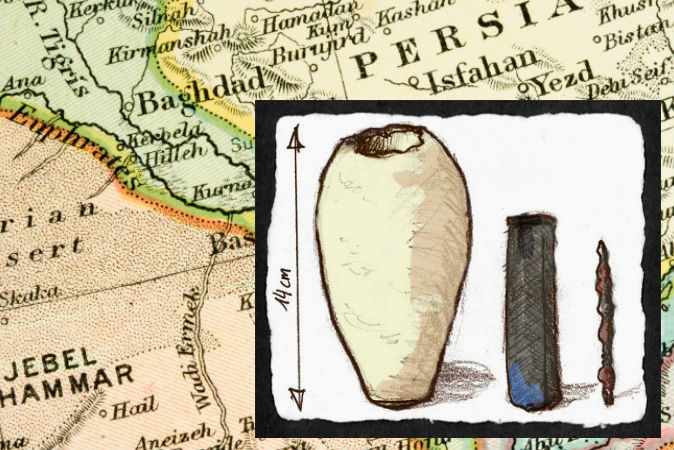 Right: An illustration of a Baghdad battery from museum artifact pictures. (Ironie/Wikimedia Commons) Background: Map of area surrounding present-day Baghdad, Iraq. (Cmcderm1/iStock/Thinkstock)[/caption]
“The batteries have always attracted interest as curios,” Dr. Paul Craddock, a metallurgy expert at the British Museum, told the BBC in 2003. “They are a one-off. As far as we know, nobody else has found anything like these. They are odd things; they are one of life’s enigmas.”
Right: An illustration of a Baghdad battery from museum artifact pictures. (Ironie/Wikimedia Commons) Background: Map of area surrounding present-day Baghdad, Iraq. (Cmcderm1/iStock/Thinkstock)[/caption]
“The batteries have always attracted interest as curios,” Dr. Paul Craddock, a metallurgy expert at the British Museum, told the BBC in 2003. “They are a one-off. As far as we know, nobody else has found anything like these. They are odd things; they are one of life’s enigmas.”
16. Ancient Egyptian Light Bulb?
A relief beneath the Temple of Hathor at Dendera, Egypt, depicts figures standing around a large light-bulb-like object. Erich Von Däniken, who wrote “Chariot of the Gods,” created a model of the bulb which works when connected to a power source, emitting an eerie, purplish light. [caption id="" align="alignnone" width="595"]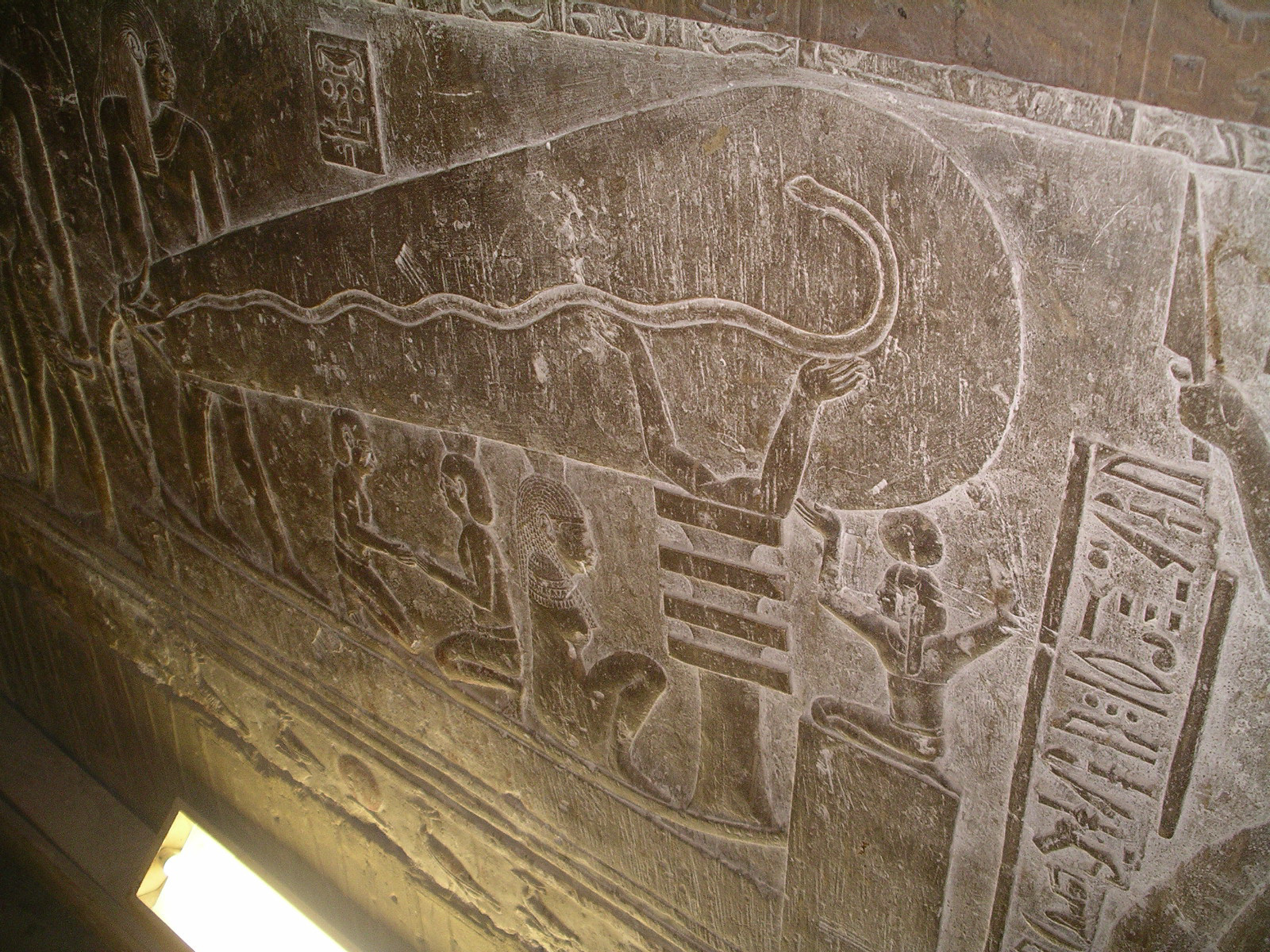 The light-bulb-like object engraved in a crypt under the Temple of Hathor in Egypt. (Lasse Jensen/CC BY 2.5)[/caption]
The light-bulb-like object engraved in a crypt under the Temple of Hathor in Egypt. (Lasse Jensen/CC BY 2.5)[/caption]
15. Great Wall of Texas
In 1852, in what is now known as Rockwall County, Texas, farmers digging a well discovered what appeared to be an ancient rock wall. Estimated to be some 200,000 to 400,000 years old, some say it’s a natural formation while others say it’s clearly man-made. [caption id="" align="alignnone" width="590"]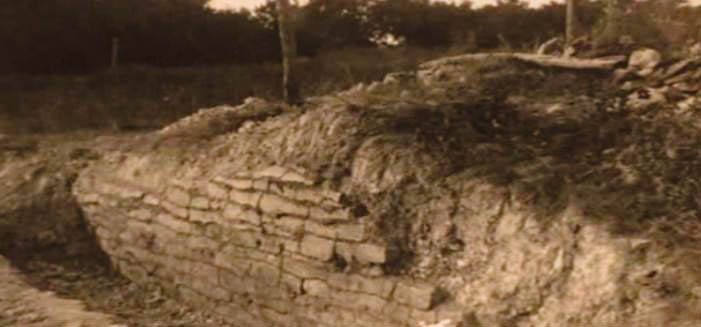 A historic photo of the “wall” found in Rockwall, Texas. (Public Domain)[/caption]
Dr. John Geissman at the University of Texas in Dallas tested the rocks as part of a History Channel documentary. He found they were all magnetized the same way, suggesting they formed where they are and were not moved to that site from elsewhere. But some remain unconvinced by this single TV-show test and call for further studies.
Geologist James Shelton and Harvard-trained architect John Lindsey have noted elements that seem to be of architectural design, including archways, linteled portals, and square openings that resemble windows.
A historic photo of the “wall” found in Rockwall, Texas. (Public Domain)[/caption]
Dr. John Geissman at the University of Texas in Dallas tested the rocks as part of a History Channel documentary. He found they were all magnetized the same way, suggesting they formed where they are and were not moved to that site from elsewhere. But some remain unconvinced by this single TV-show test and call for further studies.
Geologist James Shelton and Harvard-trained architect John Lindsey have noted elements that seem to be of architectural design, including archways, linteled portals, and square openings that resemble windows.
14. 1.8-Billion-Year-Old Nuclear Reactor?
In 1972, a French factory imported uranium ore from Oklo, in Africa’s Gabon Republic. The uranium had already been extracted. They found the site of origin to have apparently functioned as a large-scale nuclear reactor that came into being 1.8 billion years ago and was in operation for some 500,000 years. [caption id="" align="alignnone" width="589"]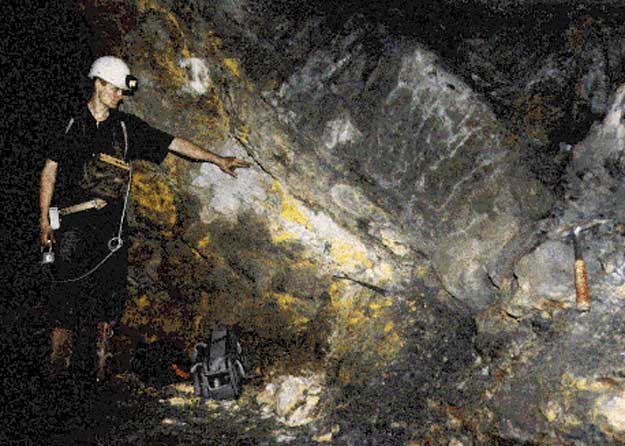 Nuclear reactor site, Oklo, Gabon Republic. (NASA)[/caption]
Dr. Glenn T. Seaborg, former head of the United States Atomic Energy Commission and Nobel Prize winner for his work in the synthesis of heavy elements, believed it wasn’t a natural phenomenon, and thus must be a man-made nuclear reactor.
For uranium to “burn” in a reaction, very precise conditions are needed. The water must be extremely pure, for one—much purer than exists naturally. The material U-235 is necessary for nuclear fission to occur. It is one of the isotopes found naturally in uranium. Several specialists in reactor engineering have said they believe the uranium in Oklo could not have been rich enough in U-235 for a reaction to take place naturally.
Nuclear reactor site, Oklo, Gabon Republic. (NASA)[/caption]
Dr. Glenn T. Seaborg, former head of the United States Atomic Energy Commission and Nobel Prize winner for his work in the synthesis of heavy elements, believed it wasn’t a natural phenomenon, and thus must be a man-made nuclear reactor.
For uranium to “burn” in a reaction, very precise conditions are needed. The water must be extremely pure, for one—much purer than exists naturally. The material U-235 is necessary for nuclear fission to occur. It is one of the isotopes found naturally in uranium. Several specialists in reactor engineering have said they believe the uranium in Oklo could not have been rich enough in U-235 for a reaction to take place naturally.
13. Sea-Faring Map Makers Before Antarctica Was Covered in Ice?
A map created by Turkish admiral and cartographer Piri Reis in 1513, but sourced from various earlier maps, is thought by some to depict Antarctica as it was in a very remote age before it was covered with ice. [caption id="" align="alignnone" width="588"]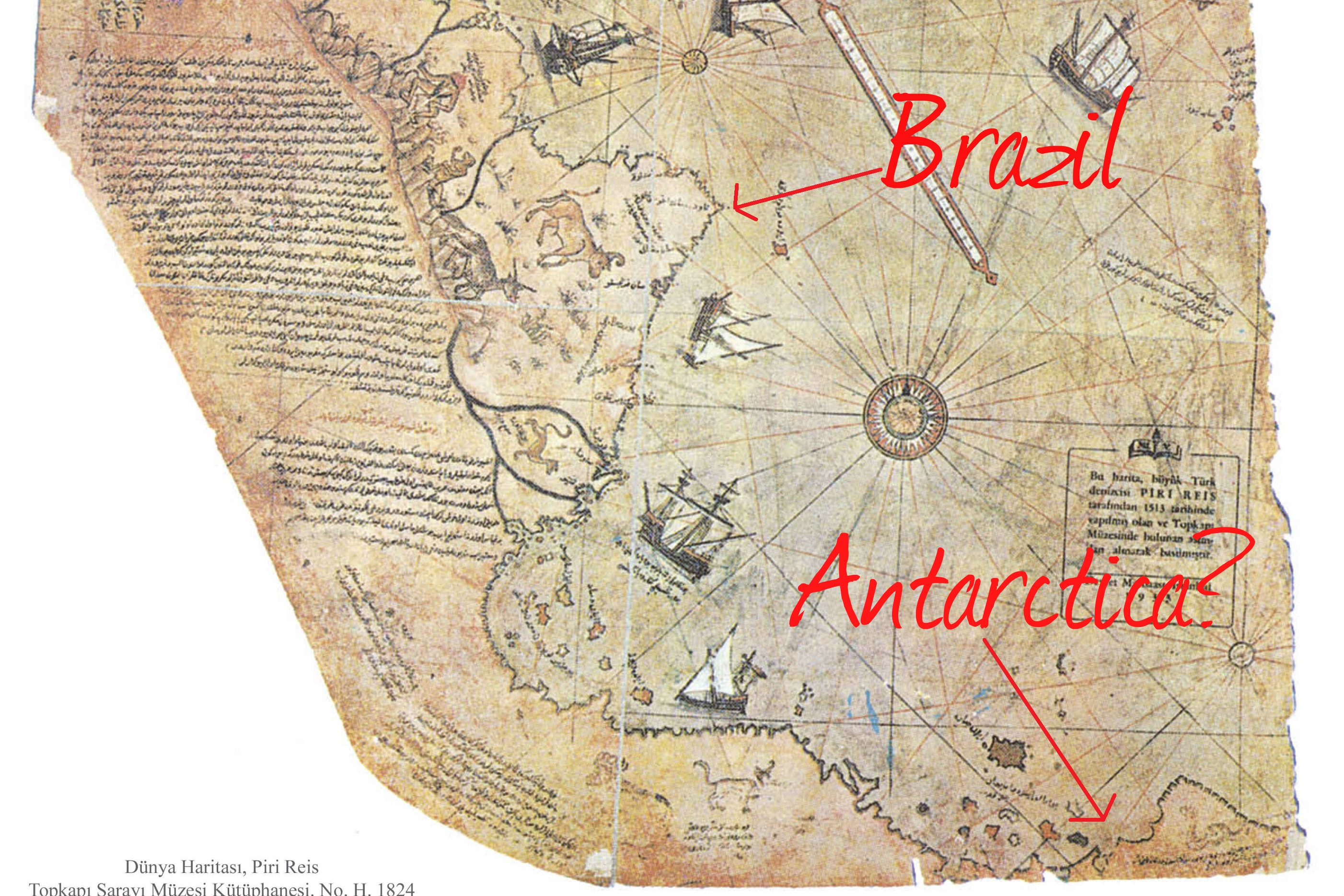 A portion of the Piri Reis map of 1513. (Public Domain)[/caption]
A landmass is shown to jut out from the southern coastline of South America. Captain Lorenzo W. Burroughs, a U.S. Air Force captain in the cartographic section, wrote a letter to Dr. Charles Hapgood in 1961 saying that this landmass seems to accurately show Antarctica’s coast as it is under the ice.
Dr. Hapgood (1904–1982) was one of the first to publicly suggest that the Piri Reis map depicts Antarctica during a prehistoric time. He was a Harvard-educated historian whose theories about geological shifts earned the admiration of Albert Einstein. He hypothesized that the land masses shifted, explaining why Antarctica is shown as connected to South America.
Modern studies refute Hapgood’s theory that such a shift could have taken place within thousands of years, but they show it could have happened within millions of years.
A portion of the Piri Reis map of 1513. (Public Domain)[/caption]
A landmass is shown to jut out from the southern coastline of South America. Captain Lorenzo W. Burroughs, a U.S. Air Force captain in the cartographic section, wrote a letter to Dr. Charles Hapgood in 1961 saying that this landmass seems to accurately show Antarctica’s coast as it is under the ice.
Dr. Hapgood (1904–1982) was one of the first to publicly suggest that the Piri Reis map depicts Antarctica during a prehistoric time. He was a Harvard-educated historian whose theories about geological shifts earned the admiration of Albert Einstein. He hypothesized that the land masses shifted, explaining why Antarctica is shown as connected to South America.
Modern studies refute Hapgood’s theory that such a shift could have taken place within thousands of years, but they show it could have happened within millions of years.
12. 2,000-Year-Old Earthquake Detector
In 132 A.D., Zhang Heng created the world’s first seismoscope. How exactly it works remains a mystery, but replicas have worked with a precision comparable to modern instruments. [caption id="" align="alignnone" width="586"]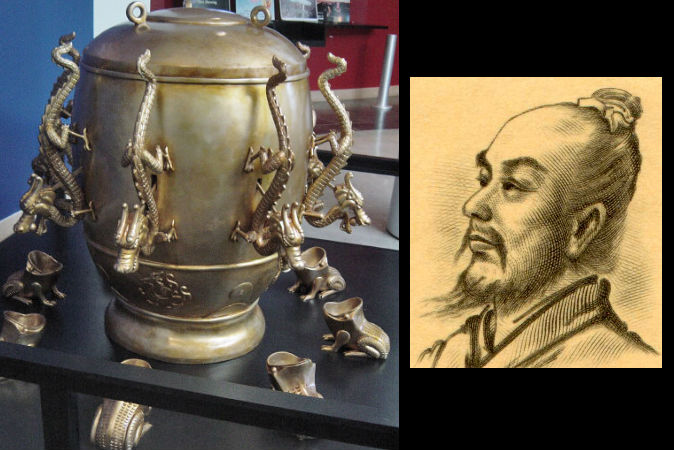 A replica of an ancient Chinese seismoscope from the Eastern Han Dynasty (25-220 A.D.), and its inventor, Zhang Heng. (Wikimedia Commons)[/caption]
In 138 A.D., it correctly indicated that an earthquake occurred about 300 miles west of Luoyang, the capital city. No one had felt the quake in Luoyang and dismissed the warning until a messenger arrived days later, requesting aid.
A replica of an ancient Chinese seismoscope from the Eastern Han Dynasty (25-220 A.D.), and its inventor, Zhang Heng. (Wikimedia Commons)[/caption]
In 138 A.D., it correctly indicated that an earthquake occurred about 300 miles west of Luoyang, the capital city. No one had felt the quake in Luoyang and dismissed the warning until a messenger arrived days later, requesting aid.
11. 150,000-Year-Old Pipes?
Caves near Mount Baigong in China contain pipes leading to a nearby lake. They were dated by the Beijing Institute of Geology to about 150,000 years ago, according to Brian Dunning of Skeptoid.com. [caption id="" align="alignnone" width="595"]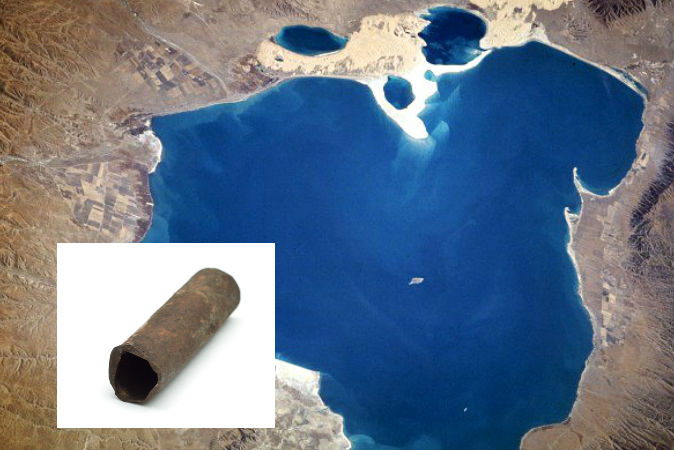 A file photo of a pipe, and a view of Qinghai Lake in China, near which mysterious iron pipes were found. (NASA; Pipe image via Zhax/Shutterstock)[/caption]
State-run media Xinhua reported that the pipes were analyzed at a local smeltery and 8 percent of the material could not be identified. Zheng Jiandong, a geology research fellow from the China Earthquake Administration, told state-run newspaper People’s Daily, in 2007, that some of the pipes were found to be highly radioactive.
Jiandong said iron-rich magma may have risen from deep in the Earth, bringing the iron into fissures where it may have solidified into tubes; though he admitted, “There is indeed something mysterious about these pipes.” He cited the radioactivity as an example of the strange qualities of the pipes.
A file photo of a pipe, and a view of Qinghai Lake in China, near which mysterious iron pipes were found. (NASA; Pipe image via Zhax/Shutterstock)[/caption]
State-run media Xinhua reported that the pipes were analyzed at a local smeltery and 8 percent of the material could not be identified. Zheng Jiandong, a geology research fellow from the China Earthquake Administration, told state-run newspaper People’s Daily, in 2007, that some of the pipes were found to be highly radioactive.
Jiandong said iron-rich magma may have risen from deep in the Earth, bringing the iron into fissures where it may have solidified into tubes; though he admitted, “There is indeed something mysterious about these pipes.” He cited the radioactivity as an example of the strange qualities of the pipes.
10. Antikythera Mechanism
A mechanism often referred to as an ancient “computer,” which was built by Greeks around 150 B.C., was able to calculate astronomical changes with great precision. [caption id="" align="alignnone" width="590"]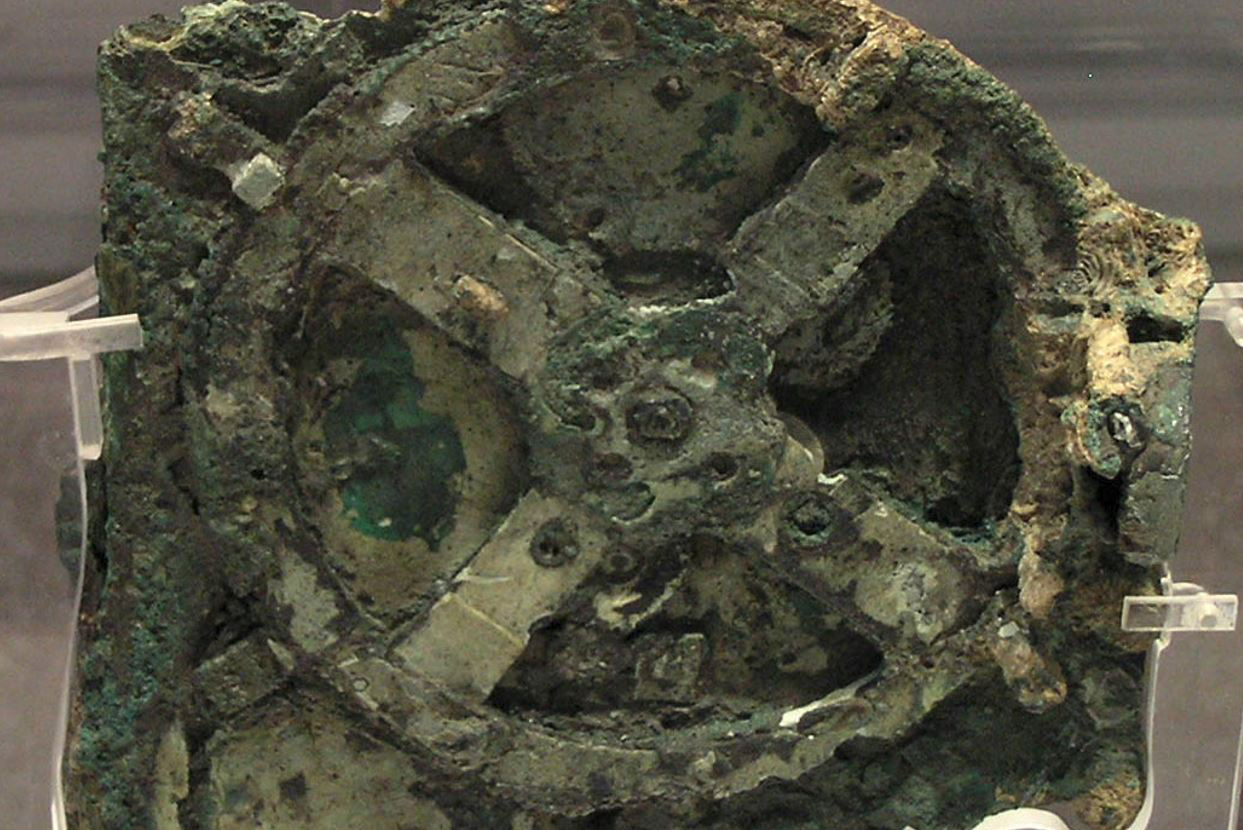 The Antikythera Mechanism is a 2000-year-old mechanical device used to calculate the positions of the sun, moon, planets, and even the dates of the ancient Olympic Games. (Marsyas/CC by SA 3.0)[/caption]
“If it hadn’t been discovered … no one would possibly believe that it could exist because it’s so sophisticated,” said Mathematician Tony Freeth in a NOVA documentary. Mathias Buttet, director of research and development for watch-maker Hublot, said in a video released by the Hellenic Republic Ministry of Culture and Tourism, “This Antikythera Mechanism includes ingenious features which are not found in modern watch-making.”
The Antikythera Mechanism is a 2000-year-old mechanical device used to calculate the positions of the sun, moon, planets, and even the dates of the ancient Olympic Games. (Marsyas/CC by SA 3.0)[/caption]
“If it hadn’t been discovered … no one would possibly believe that it could exist because it’s so sophisticated,” said Mathematician Tony Freeth in a NOVA documentary. Mathias Buttet, director of research and development for watch-maker Hublot, said in a video released by the Hellenic Republic Ministry of Culture and Tourism, “This Antikythera Mechanism includes ingenious features which are not found in modern watch-making.”
9. Drill Bit in Coal
John Buchanan, Esq., presented a mysterious object to a meeting of the Society of Antiquaries of Scotland on Dec. 13, 1852. A drill bit had been found encapsulated in coal about 22 inches thick, buried in a bed of clay mixed with boulders about 7 feet thick. [caption id="" align="alignnone" width="592"]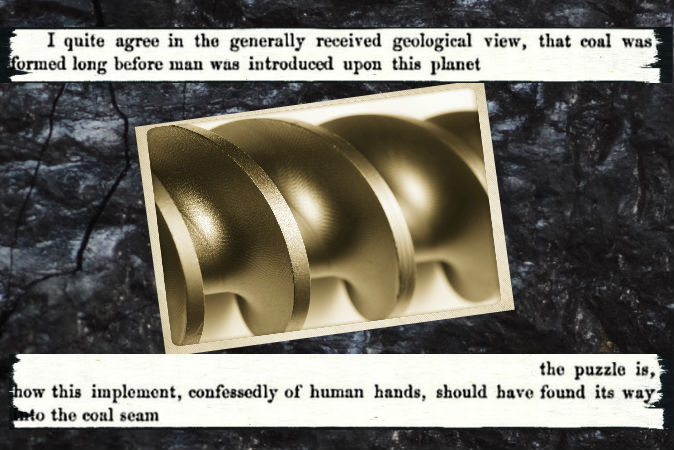 File image of coal (Kkymek/iStock) File image of a drill (Konstik/iStock; edited by Epoch Times)[/caption]
The Earth’s coal is said to have formed hundreds of millions of years ago. The Society decided that the instrument was of a modern level of advancement. But it concluded that “the iron instrument might have been part of a borer broken during some former search for coal.”
Buchanan’s detailed report did not include any signs that the coal surrounding the instrument had been punctured by drilling.
File image of coal (Kkymek/iStock) File image of a drill (Konstik/iStock; edited by Epoch Times)[/caption]
The Earth’s coal is said to have formed hundreds of millions of years ago. The Society decided that the instrument was of a modern level of advancement. But it concluded that “the iron instrument might have been part of a borer broken during some former search for coal.”
Buchanan’s detailed report did not include any signs that the coal surrounding the instrument had been punctured by drilling.
8. 2.8-Billion-Year-Old Spheres?
Spheres with fine grooves around them, found in mines in South Africa, have been said by some to be naturally formed masses of mineral matter. Others have said they were precisely shaped by a prehistoric human hand. [caption id="" align="alignnone" width="592"]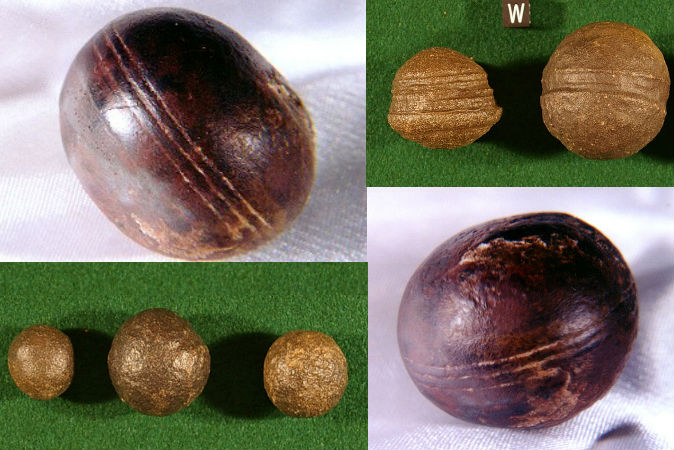 Top left, bottom right: Spheres, known as Klerksdorp spheres, found in the pyrophyllite (wonderstone) deposits near Ottosdal, South Africa. (Robert Huggett) Top right, bottom left: Similar objects known as Moqui marbles from the Navajo Sandstone of southeast Utah. (Paul Heinrich)[/caption]
“The globes, which have a fibrous structure on the inside with a shell around it, are very hard and cannot be scratched, even by steel,” said Roelf Marx, curator of the museum of Klerksdorp, South Africa, according to Michael Cremo’s book, “Forbidden Archaeology: The Hidden History of the Human Race.” Marx said the spheres are about 2.8 billion years old.
If they are mineral masses, it is unclear how exactly they formed.
Top left, bottom right: Spheres, known as Klerksdorp spheres, found in the pyrophyllite (wonderstone) deposits near Ottosdal, South Africa. (Robert Huggett) Top right, bottom left: Similar objects known as Moqui marbles from the Navajo Sandstone of southeast Utah. (Paul Heinrich)[/caption]
“The globes, which have a fibrous structure on the inside with a shell around it, are very hard and cannot be scratched, even by steel,” said Roelf Marx, curator of the museum of Klerksdorp, South Africa, according to Michael Cremo’s book, “Forbidden Archaeology: The Hidden History of the Human Race.” Marx said the spheres are about 2.8 billion years old.
If they are mineral masses, it is unclear how exactly they formed.
7. Iron Pillar of Delhi
This pillar is at least 1,500 years old but could be older. It remains rust-free and is of astounding purity. It is 99.72 percent iron, according to professor A.P. Gupta, head of the Department of Applied Sciences and Humanities at the Institute of Technology and Management in India. [caption id="" align="alignnone" width="588"]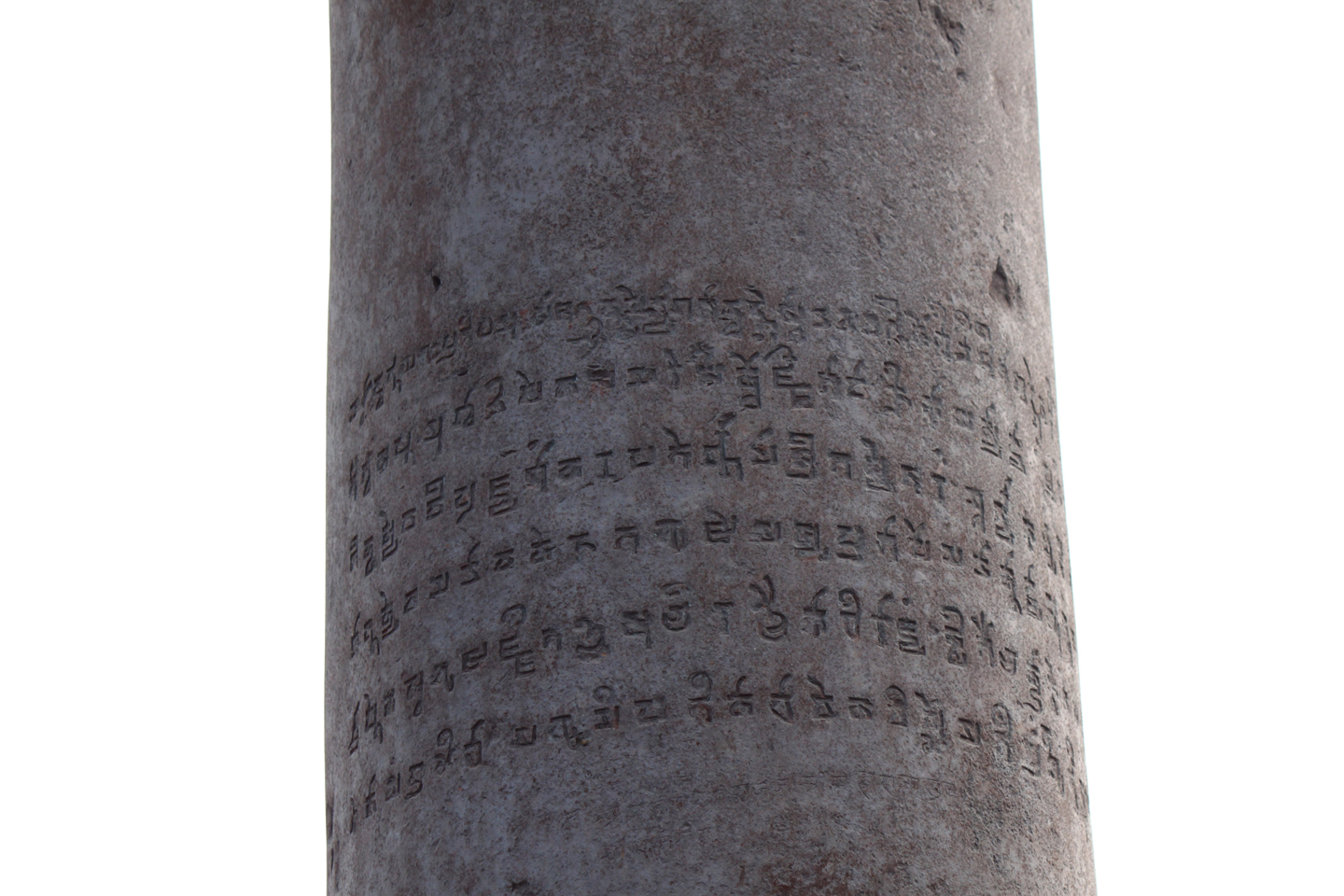 An inscription from about 400 A.D. by King Chandragupta II on the Iron Pillar of Delhi. (Venus Upadhayaya/Epoch Times)[/caption]
In modern times, wrought iron has been made with a purity of 99.8 percent, but it contains manganese and sulfur, two ingredients absent in the pillar.
It was made at least “400 years before the largest known foundry of the world could have produced it,” wrote John Rowlett in “A Study of the Craftsmen of Ancient and Medieval Civilizations to Show the Influence of their Training on our Present Day Method of Trade Education.”
Read the rest of the list at: TheEpochTimes.com
An inscription from about 400 A.D. by King Chandragupta II on the Iron Pillar of Delhi. (Venus Upadhayaya/Epoch Times)[/caption]
In modern times, wrought iron has been made with a purity of 99.8 percent, but it contains manganese and sulfur, two ingredients absent in the pillar.
It was made at least “400 years before the largest known foundry of the world could have produced it,” wrote John Rowlett in “A Study of the Craftsmen of Ancient and Medieval Civilizations to Show the Influence of their Training on our Present Day Method of Trade Education.”
Read the rest of the list at: TheEpochTimes.com
By Mary Villareal // Share
Research into aluminum toxicity KILLED because it exposed the dangers of childhood vaccines
By Ethan Huff // Share
Toxic chemical in commercial cleaning products and bug sprays linked to arthritis
By Zoey Sky // Share
HIT THE ROAD: Musk fires top Twitter execs on his first day at the helm of tech giant
By Belle Carter // Share
Study shows eating prunes daily can help prevent bone loss
By Zoey Sky // Share
Excessive exposure to blue light can accelerate the aging process, experts warn
By Zoey Sky // Share
Governments continue to obscure COVID-19 vaccine data amid rising concerns over excess deaths
By patricklewis // Share
Tech giant Microsoft backs EXTINCTION with its support of carbon capture programs
By ramontomeydw // Share
Germany to resume arms exports to Israel despite repeated ceasefire violations
By isabelle // Share
